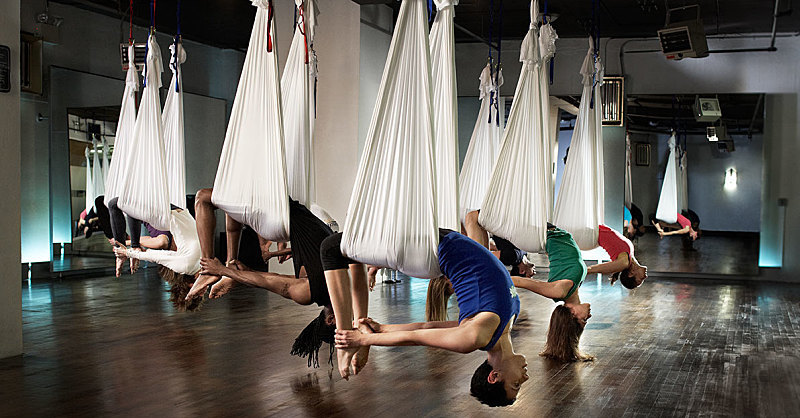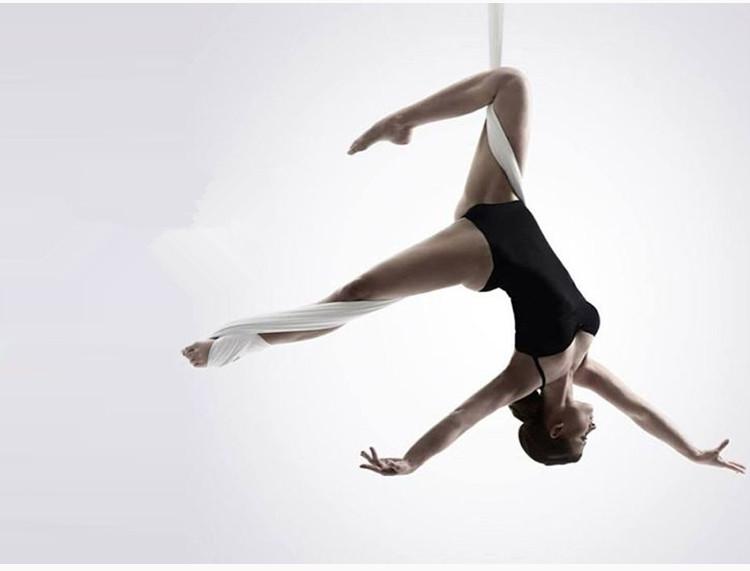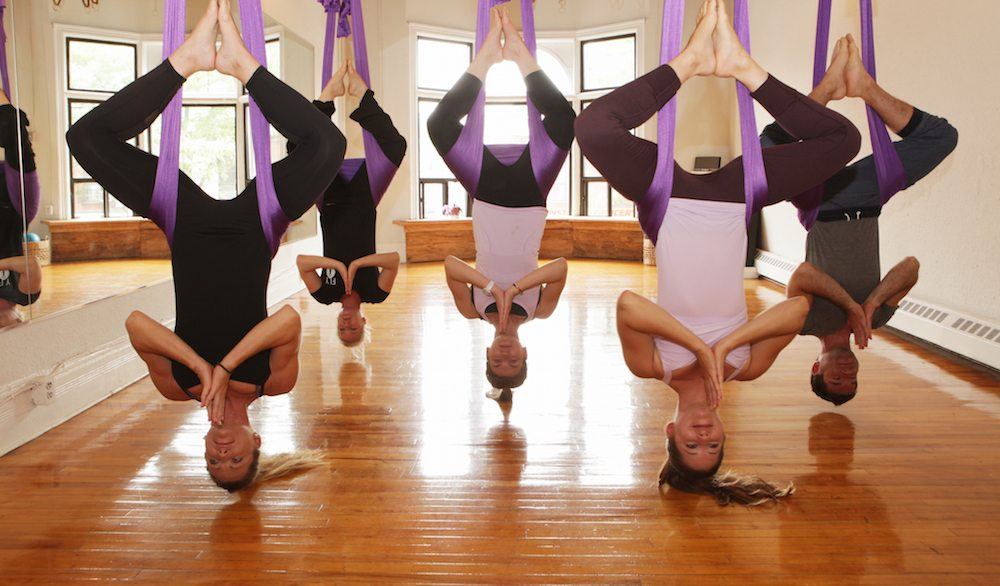Flying yoga really has new advantages if put on the same scale as traditional yoga.
Over the past 50 years, yoga has become very popular due to its benefits not only for the body but also for the mind. Professional yogis are using the traditional yoga foundation to create new yoga poses that cater to the needs of both professional yogis and beginners in the sport. Flying yoga (“Aerial yoga” or “Anti-gravity yoga”) is one such creation.
Flying yoga was founded in 2007 by Christopher Harrison. His inspiration is the acrobatic troupe Antigravity, Inc., where he works as a soloist and director. The “silk hammock” inspired him to create a performance that combines acrobatic techniques, artistic sports and contemporary dance. These performances are required at the biggest events like the Oscars, the Grammys, and even the presidential inauguration. Yoga is included in the warm-up for preparatory practice. That’s how flying yoga was born.
What is flying yoga?
The simplest definition of flying yoba is a yoga practice that combines traditional yoga poses with Pilates exercises with the help of a silk rope. With a rope suspended 3m from the floor, the practitioner is supported in poses that require a banana tree or backbench. The rope has a weight capacity of more than 900kg for the safety of the trainees while maintaining its softness.
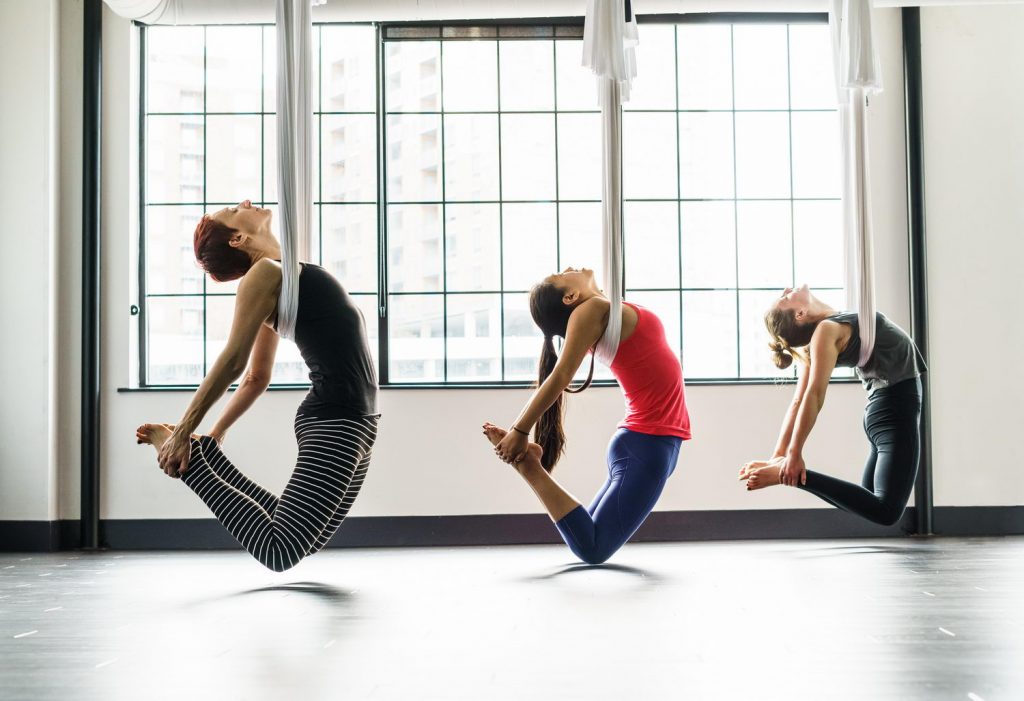
Photo: Getty Images
When you practice, you will hang in the air. So this yoga is called aerial yoga, zero gravity yoga or flying yoga.
For the regular yoga practitioner, flying yoga brings a little fun into their traditional practice. For starters, flying yoba provides support in difficult movements, helping you learn balance while building muscle strength.
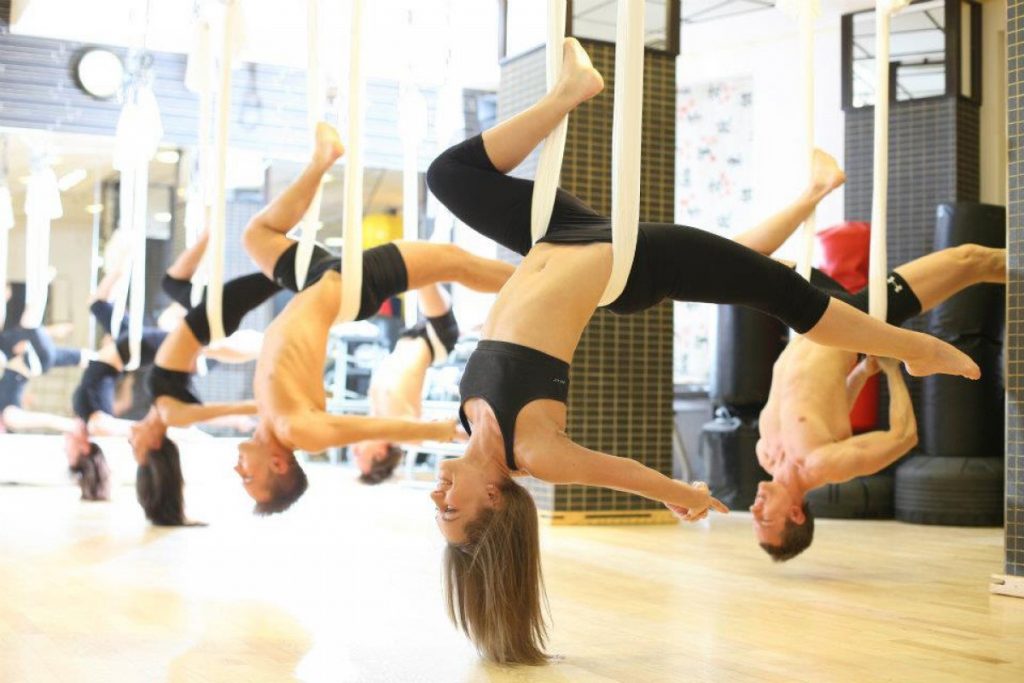
Photo: Shutter Stock
There are many types of flying yoga for you to choose from depending on your needs and preferences. Some classes are more gently paced and more meditative. Some other classes require more difficult poses. Just like traditional yoga, flying yoga also combines breathing techniques, savasana relaxation techniques, chanting… depending on the class.
Benefits of flying yoga
Flying yoga has the same benefits as traditional yoga, with a few minor differences.

Reduce pressure on the spine
One of the top benefits of hanging from a rope in the banana tree position or leaning back is that it reduces pressure on the spine. Instead of being pulled down by gravity and pressing down on the spine, the muscles in the spine will be relaxed. Even the joints are not subjected to pressure like with regular yoga.
Flying yoga challenges the nervous system, mental health and body perception
Practicing flying yoga will help you move more smoothly. Simple poses that require focus and patience will add grace to your everyday movements.
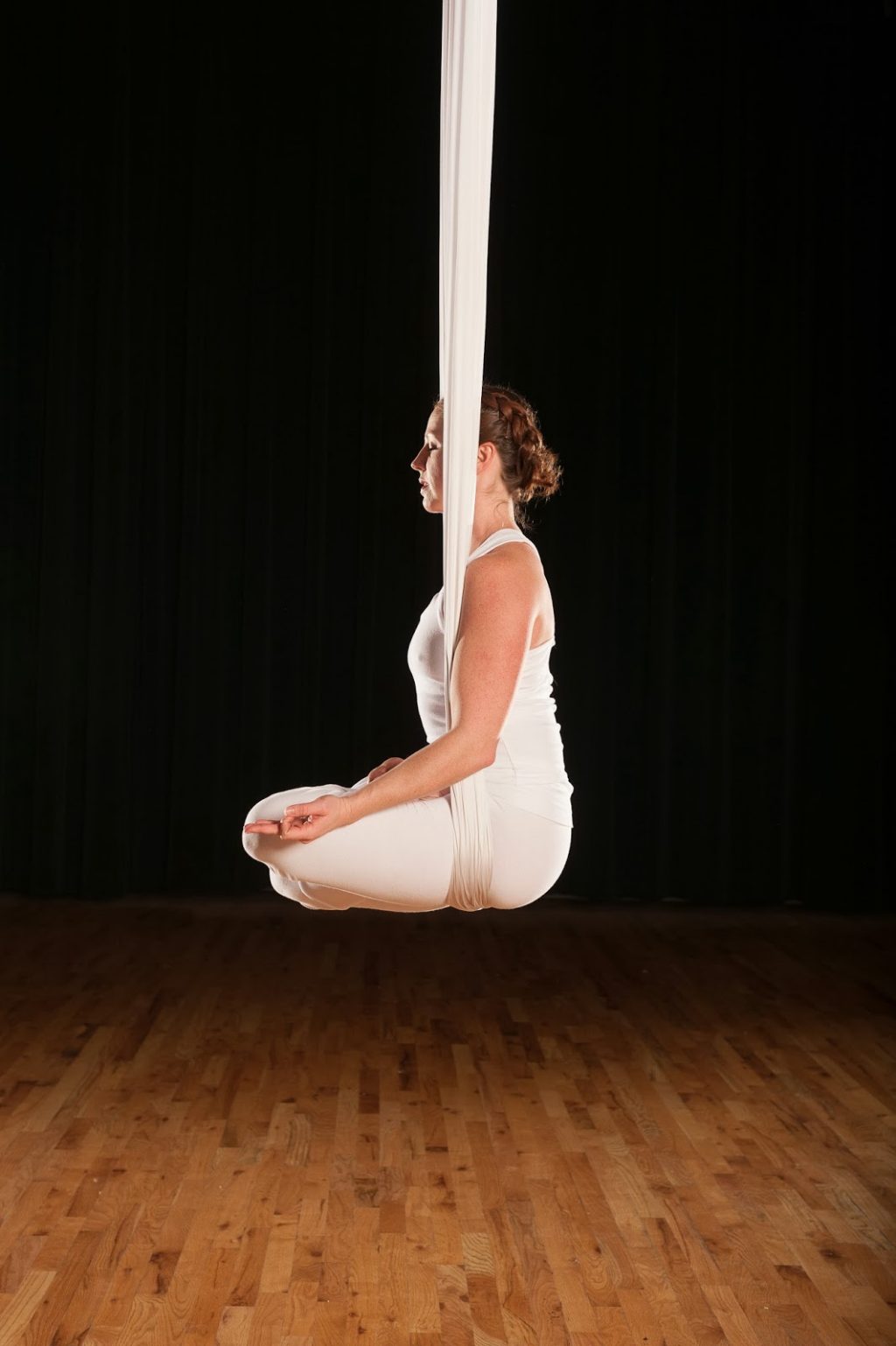
Photo: Shutter Stock
Increase traction
This particular benefit is perhaps the most exciting advantage of flying yoga over traditional yoga. The “pull” movements featured in flying yoga are a great way to strengthen your arms and balance your shoulders. Traditional yoga does not have this move. Even poses that require body support on the shoulders can create pressure, causing muscle imbalances in the shoulders.
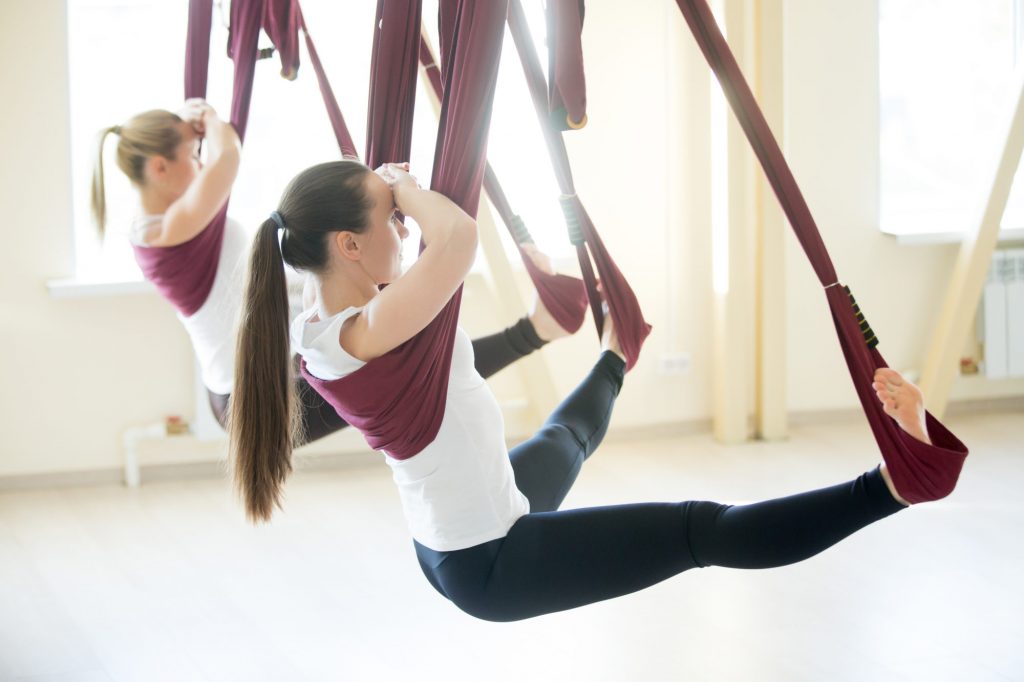
Photo: Getty Images
Increased flexibility
With the help of the silk rope, the practitioner’s body can be relaxed, more comfortable to adjust the posture. The ability to relax can help you increase your range of motion.
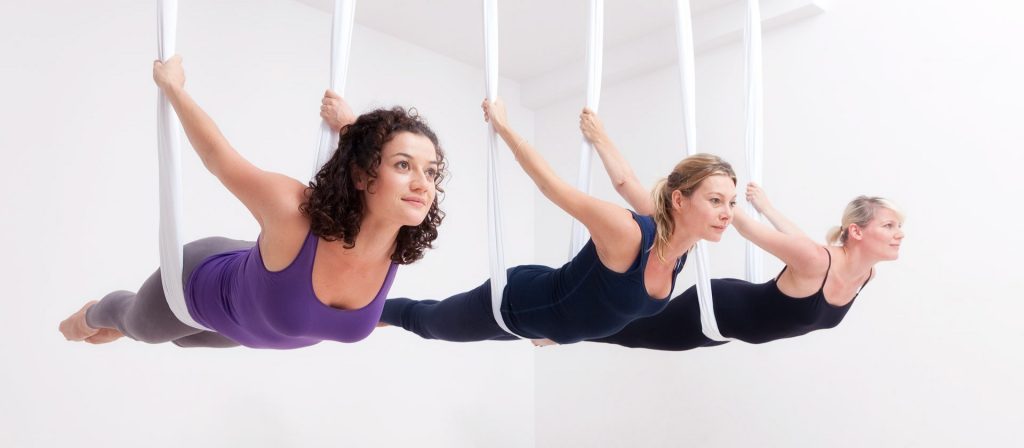
Photo: Shutter Stock
Friendly to “beginners”
Flying yoga is not only for professional yogis but also for beginners. With the help of the rope, new students can self-adjust their posture and balance when exercising their muscles to get stronger. Besides, a flying yoga class always has a smaller number of students than traditional yoga so that the trainer can better guide and support students.
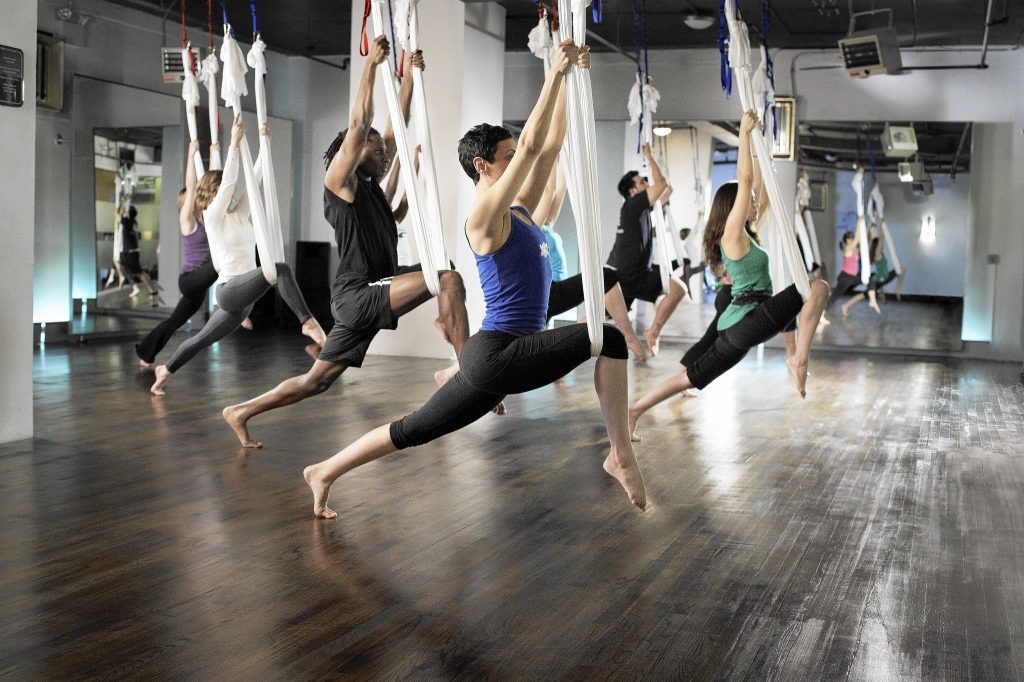
Photo: Shutter Stock
Stay in shape
Research from the American Council on Exercise (USA) shows that women who practice 150 minutes of yoga a week for 6 consecutive weeks notice a difference with their weight. On average, each person lost 1.5 kg, 2% body fat and about 2.5cm waist circumference.

Photo: Livestrong
Some experts think that because of the flexibility when supported from the rope, the practitioner of flying yoga can perform more difficult movements than regular yoga, so flying yoga is faster for more effective.


